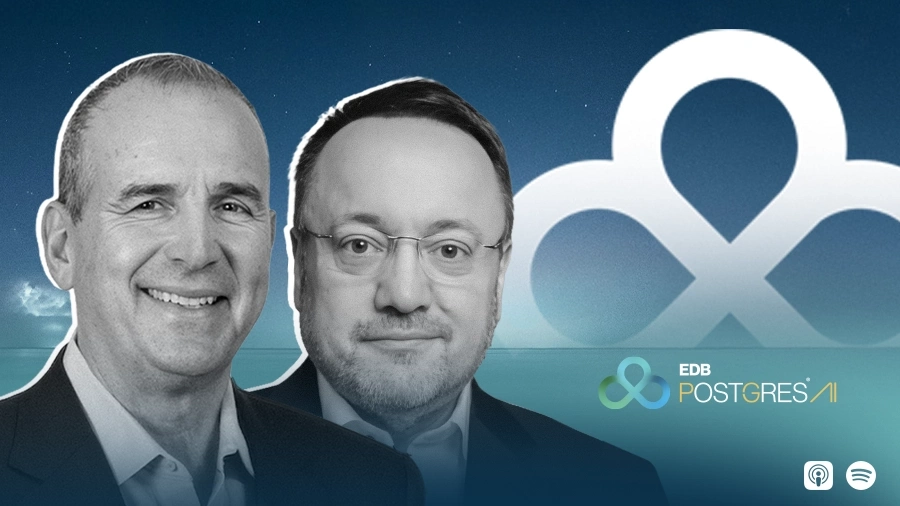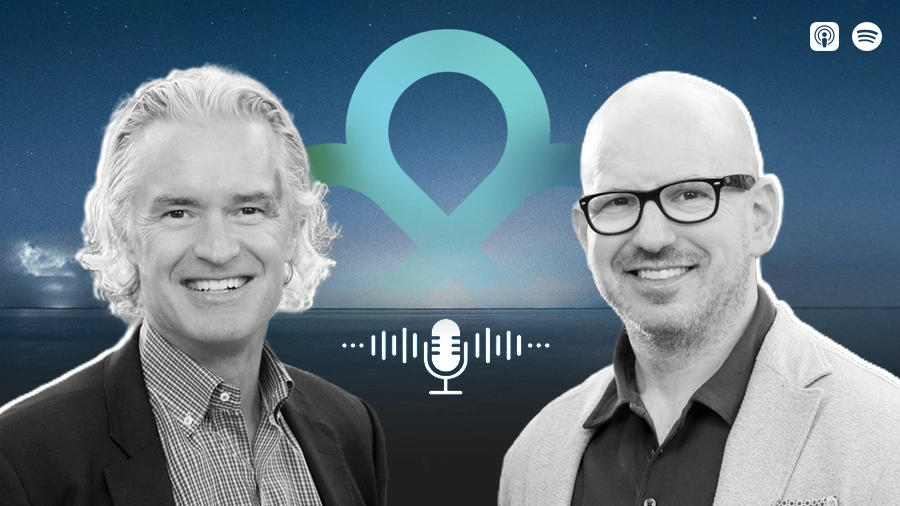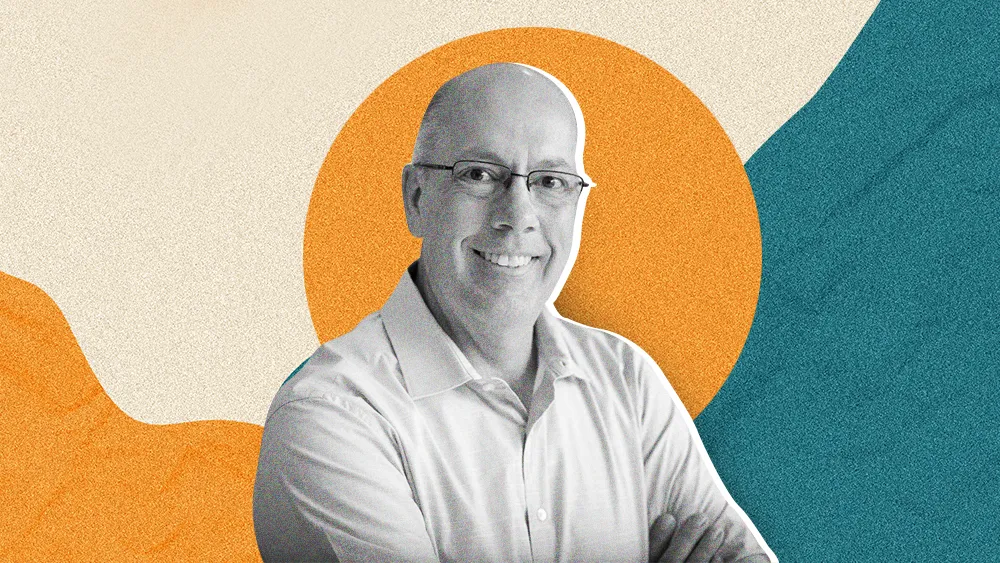Discussions about AI in healthcare are starting to get real. Beyond abstract concepts, the dialogue between experts is shifting to practical impact. Now, some leaders are tackling the industry’s fundamental limits—patient access, quality of care, and rising costs—by treating AI and data as "sovereign assets." But in the new world of AI, the real winners are those who are the most deliberate, not just the loudest.
From Michael Gale, CMO at EDB and host of the AI & Data Horizons podcast, that insight emerged during a recent conversation he had with Peter Arduini, President and CEO of GE HealthCare. Just four years after announcing its separation from General Electric, the $20 billion leading global provider of healthcare solutions is at the forefront of innovating medical technology, pharmaceutical diagnostics, and integrated, cloud-first AI-enabled solutions, services, and data analytics.
To get the conversation started, Gale poses a straightforward question for Arduini. "Can you talk to us about how you're thinking about AI in the context of GE HealthCare?"
Purpose before product: According to Arduini, the answer requires some context first. "As a new company coming out of GE, we put a lot of energy into our purpose, 'creating a world where healthcare has no limits.' It's a bold statement. But when you think about our system, there are quite a few limits—access for patients, the quality of the broader delivery of care, or the other big one, which is the cost of care."
For Arduini, AI and data have the potential to positively affect all three. Currently, he sees the most immediate benefit coming from a disciplined, "inside out" strategy that makes existing assets smarter. Already, he says the approach is delivering a tangible return on investment.
An instant upgrade: Applying a new AI algorithm to a legacy MRI machine, for instance, can instantly boost its quality and slash scan times. "With the right AI algorithm, you can eliminate signal noise, allowing you to take a ten-year-old system and give it state-of-the-art image quality today," Arduini says. And, Gale concurs. "This ability to modernize hardware through software is clearly where we're going. It's so naturally suited to MRIs," he says. "Is it tough to replicate that sort of success?"
For Arduini, the vision extends far beyond upgrading old equipment. "AI is fundamentally changing some of the physics or capabilities that we thought were the way things work," he says. Meanwhile, a convergence of miniaturized hardware, cloud, and AI is set to democratize advanced medical tools.
Small tech, big impact: As an example of the evolving modality for cost, access, and quality, Arduini points to the ultrasound. "The combination of miniaturization of the technology, cloud computing to enable reach, and AI—these three together—really have the opportunity to transform care delivery."
Diagnosis, democratized: "If every primary care physician used a hand-held AI ultrasound instead of a stethoscope, you could find disease so much earlier," Arduini explains. "You could fundamentally bend the curve on both better outcomes and also better cost."
The vision is compelling, Gale admits. But for him, it also seems a bit obvious. Playing the role of skeptic, he wonders whether hospitals and insurers are actually buying into this. "Or is it still embryonic, in its 'from lab to basic test environment?'" he asks. "Obviously, it varies quite a bit around the world," Arduini explains. "But in the US, it's still early innings."
Inside-out solution: "Our view is this idea of helping change from the 'inside out,'" Arduini continues. "As you create smarter devices and drugs and you integrate them into the already existing care pathways and help enhance it, it's a way to drive better outcomes around the specific use case, rather than trying to create an infrastructure that says it solves for this problem."
However, the true power of AI may lie outside of its architecture entirely. Here, Gale observes that the technology’s role is shifting. "People think AI means a system telling you what disease you have, but it's equally about smarter devices, more precise therapeutics, and even helping hospitals run like air traffic control."
Mission control for medicine: Arduini confirms this is the real "aha" moment for hospital leaders, who see a path to optimizing the entire care delivery system. "That's when the light comes on," Arduini says. "Enlightened organizations realize they can create a great environment for their clinicians and use their most important asset—their people—to bring better care."
Yet Arduini’s vision is grounded in pragmatism. He acknowledges the intense financial and labor pressures facing healthcare systems.
A dose of reality: For organizations, integrating new tools into existing care pathways is the only viable path forward. "It's still early innings for larger institutions trying to figure out how to pick their bets," Arduini admits. "Realistically, many health systems have come out of challenging environments post-COVID."
The screening gap: Still, success ultimately depends on a fundamental shift toward proactive screening. "Only about ten percent of lung cancer cases are found via screening," Arduini points out. "If that were seventy percent, they would be in such earlier stages, the cost to treat them and the outcome results would be significant."
Fueling this transformation is a vast, untapped resource: hospital data. Here, Gale cuts to the heart of a common misconception. "There's always been this preset that AI is about data," he says. "Well, actually, imaging is data." To contextualize the staggering scale of the problem, Arduini explains that a single hospital generates 50 petabytes of data annually—yet over 75% of it goes unused. "Most patient monitoring data in a hospital isn't archived. Once it gets to the right side of the screen, it's gone forever."
Ultimately, Arduini concludes with a clear vision for turning this dormant resource into actionable insights. "The future is this idea of multimodal diagnosis," he says. "It's about assimilating different components of data onto a single pane of glass that can help direct clinicians on the next one or two steps they should take."









